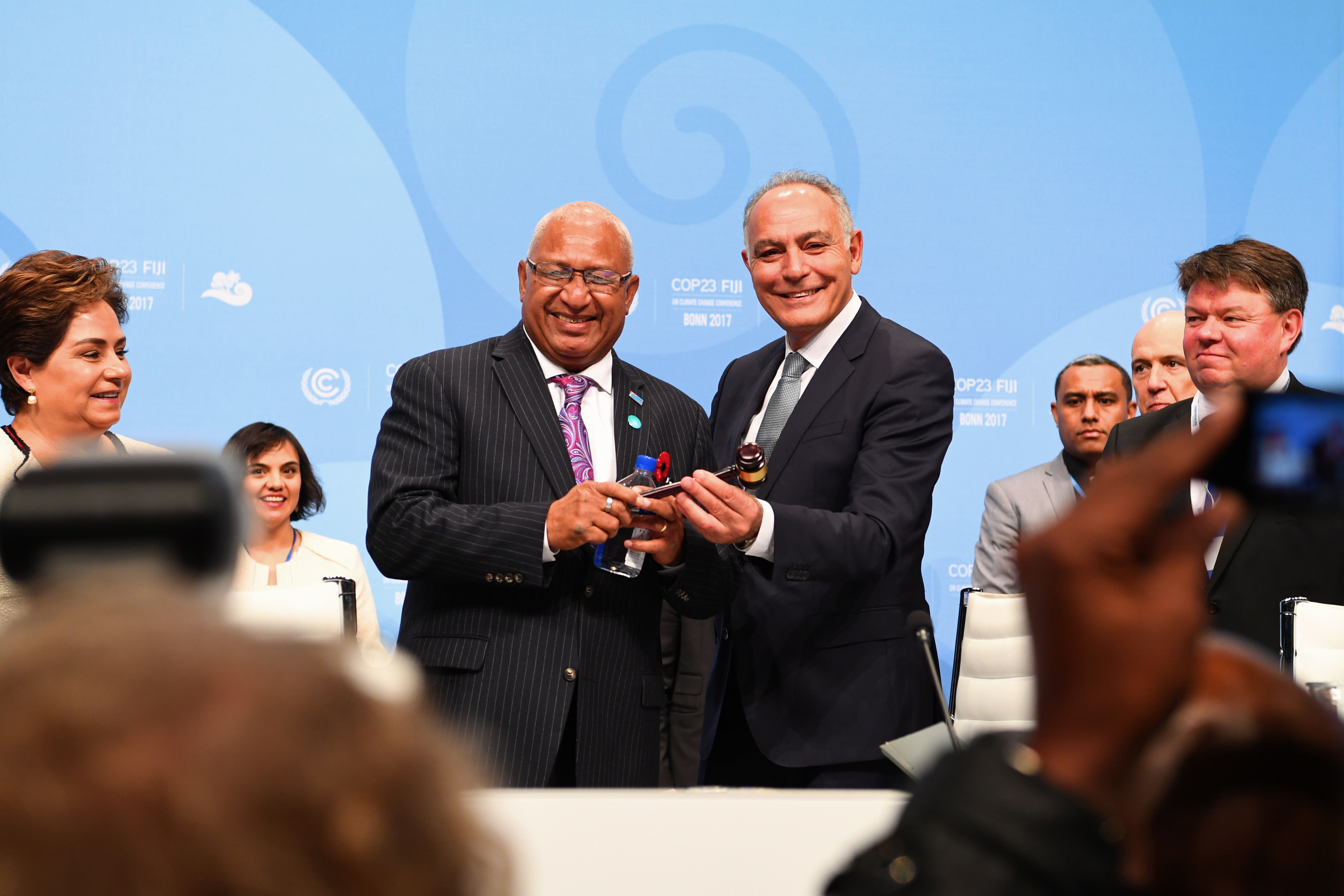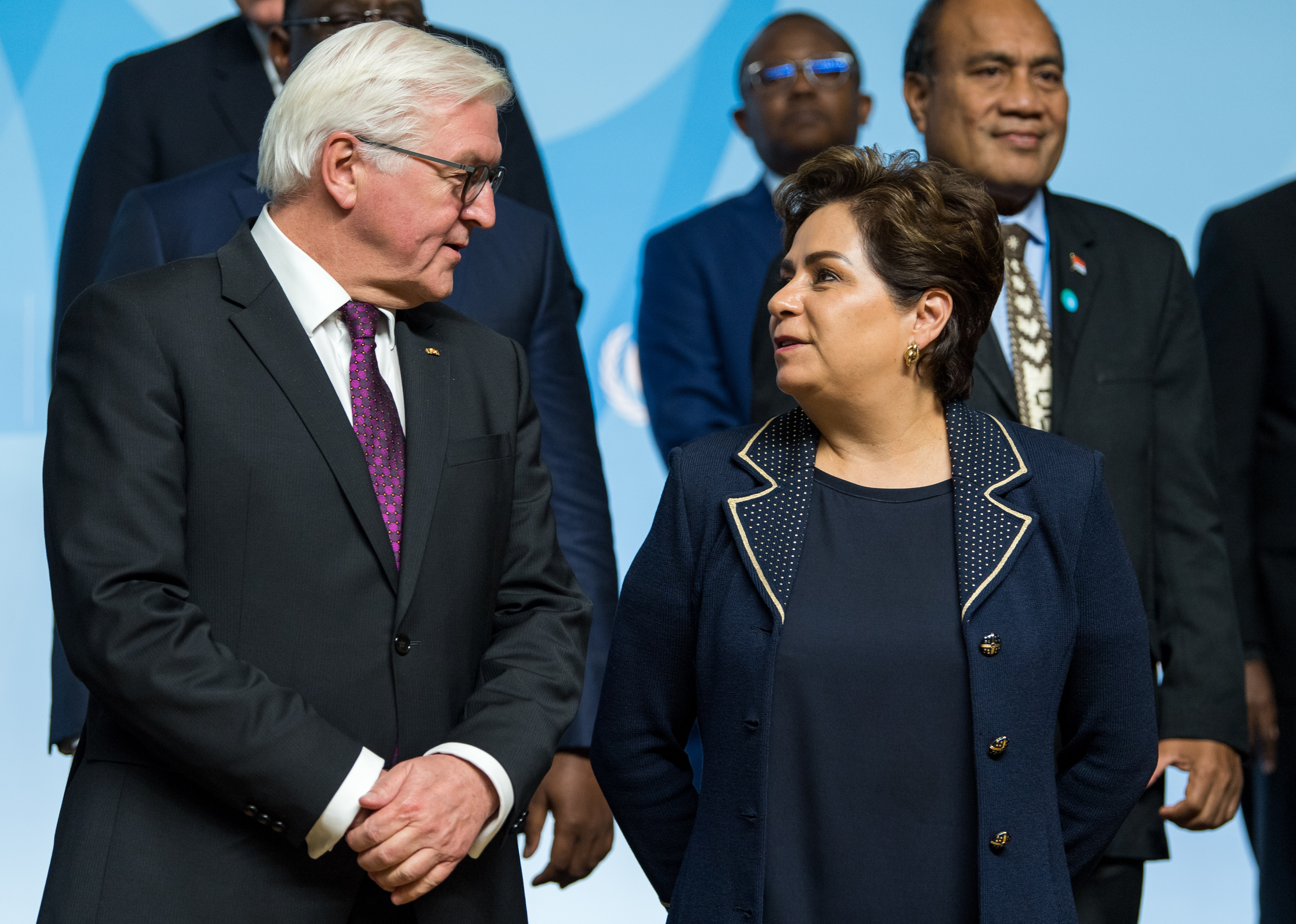

(Photo: Patrik Stollarz/AFP/Getty Images)
This week, a court in the German city of Hamm ruled that a lawsuit from a Peruvian mountain guide named Saul Luciano Lliuya against the German power company RWE had merit. RWE does not operate in Peru, but the 37-year-old Lliuya argued the company nonetheless shared responsibility for rising greenhouse gas emissions that were melting local glaciers and making it more likely that his Andean home town of Huaraz would suffer the consequences of severe flooding.
The stakes of the case are relatively small: Lliuya’s 2015 suit is seeking $20,000, or one half of 1 percent of the cost of a dam project that would protect Huaraz from flooding. The figure is based on estimates that RWE, founded in 1898, is responsible for about half a percent of historical worldwide emissions.
The preliminary ruling from the Hamm court is unusual; it rejected the well-worn argument that, because it is so hard to prove cause and effect, a single entity cannot be held responsible for any specific case of climate impact. A final ruling on Lliuya’s claim may still be months away, but the fact that the court agreed to hear the case is significant.
“This is important because it could mean a big polluter may finally be held directly responsible for the impacts it has on the most vulnerable,” Mohamed Adow, a climate campaigner with Christian Aid, tells Pacific Standard.
Meanwhile, at COP23 in Bonn—less than 100 miles southwest of Hamm—negotiators from nearly 200 countries have gathered since November 6th to tackle a similar version of the same question: Can we require the countries that are historically responsible for global warming to pay for its consequences? How much does the developed world owe to the rest of the world?
In the parlance of the climate change negotiations, this concept is referred to as “Loss and Damage”; in general terms, it is a kind of insurance initiative that would obligate developed, industrialized countries to provide funds to reimburse poor and developing countries for economic losses due to the impacts of climate change.
Though the concept of compensating victims of climate change dates back more than 25 years—at least to the Earth Summit in Rio de Janeiro—the term “Loss and Damage” first surfaced back in 2011, during negotiations in Durban, South Africa. The subject sparked intense negotiations in Doha, Qatar, the following year before it was formalized, making it separate from efforts to help vulnerable countries adapt to future impacts of climate change. In 2013, in Warsaw, a Loss and Damage mechanism was created, and Article 8 of the 2015 Paris Agreement “provides a legal basis for long-term action on loss and damage,” calling for action that is “cooperative and facilitative.”
That last step established Loss and Damage as a third plank in the worldwide effort to combat climate change, along with mitigation (reducing worldwide emissions to make climate change less severe) and adaptation (taking steps to make the world more resilient against the impacts of climate change).
“What Loss and Damage really means is that the countries whose history of industrialization is responsible for climate change should help compensate poorer countries suffering financial losses due to rising sea levels, expanding deserts, contaminated water supplies, severe weather, and other impacts,” Julie-Anne Richards, a Loss and Damage analyst with the Climate Justice Program, tells Pacific Standard.
“But it’s one thing to say it should happen, and another to figure out how it will actually happen,” Richards concluded.
The process of bridging that gap formally got underway this year in Bonn, though as the talks approached their close on November 17th, a decision on the financial aspects of a Loss and Damage mechanism was pushed back to 2018. That was despite a particularly harsh hurricane season that demonstrated the consequences of the severe weather that scientists say will become more common thanks to climate change.
Heading into the Bonn talks, the island nation of Fiji, which holds the presidency of the negotiations, said it wanted to make progress on Loss and Damage one of the priorities of its presidency. But as the talks progressed, Fiji Prime Minister Frank Bainimarama instead backed plans for a smaller-scale, more traditional insurance initiative called the “InsuReslience Global Partnership” that would nonetheless provide working insurance plans to as many as 400 million vulnerable people worldwide by 2020. In remarks in Bonn, Bainimarama said the plan was a “practical response” to the challenges residents of poor countries face.

(Photo: Lukas Schulze/Getty Images)
Patricia Espinosa, the United Nations’ top climate change official, praised the InsuResilience plan, calling it “one shining example of what can be delivered.”
But climate activists and delegates from developing countries are not so sure. Harjeet Singh, the global head of climate change for ActionAid International, said in a Bonn briefing that Bainimarama’s initiative would “fall short of being a safety net for everyone,” noting that it would simply act as a marketplace between those in need and the private sector. It is unclear how premiums would be set, who would pay them, and whether there would be guarantees in place to assure policies could not be canceled.
“When you go to buy health insurance, the first thing they ask is if you are already ill,” Ethiopian delegate Gebru Jember Endalew told the plenary in Bonn. “First, we need to address the vulnerability of infrastructure [before selling] poor countries insurance.”
The Climate Justice Program’s Richards agrees.
“If the answer is an insurance program, that would mean the poorest countries would have to pay the premiums in order to protect themselves from the impacts of a problem created by the wealthiest countries,” she said, calling on ministers on hand to re-open discussions on Loss and Damage in the final hours of negotiations in Bonn.
As with many other parts of the climate negotiation process, the central challenge is figuring out who will pay the bills. Countries at the 2009 climate summit in Copenhagen, for example, agreed to create the Green Climate Fund to provide at least $10 billion a year to help poor and developing countries adapt to the unavoidable future impacts of climate change. Under the Paris Agreement, that figure is supposed to ramp up to $100 billion per year by 2020. But as of mid-2017, the fund had raised an anemic total of $10.3 billion, while the bulk of the money countries have pledged so far has yet to be paid.
“The debate on Loss and Damage will ultimately be won or lost based on how it can be financed,” Christian Aid’s Adow says. “We can’t just go around to finance ministries with our hands out.”
Among the ideas floated in the past to help fund Loss and Damage initiatives are a levy on profits from energy companies, fees attached to transport-related emissions, and a small tax on all financial transactions in developed countries.
According to Joel Suarez Orozco, a negotiator from Cuba, which was pounded by Category 5 Hurricane Irma this year, the details of how Loss and Damage is paid for is less important than making sure that the mechanism starts functioning.
“When someone in a poor country loses the roof of his house to the hurricanes that become stronger and more frequent because of climate change, it is apparent something must be done,” Orozco tells Pacific Standard. “People in these negotiations can stand around with their arms crossed, but those of us at risk and living in developing countries do not have that luxury.”





